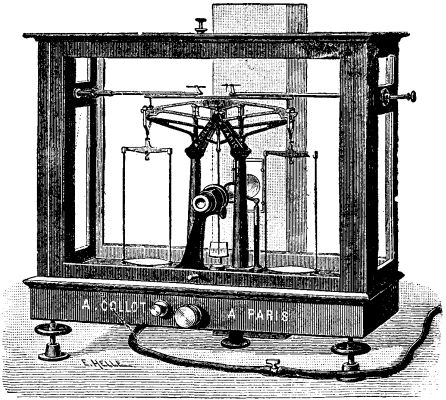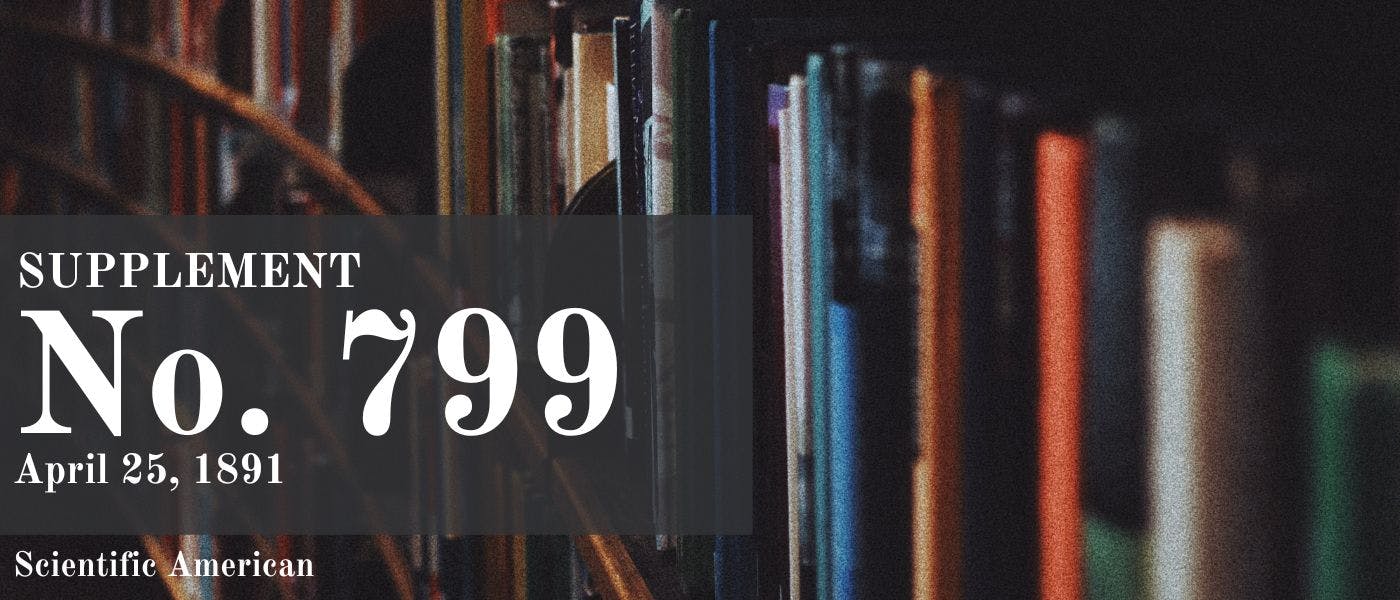Scientific American Supplement, No. 799, April 25, 1891 by Various, is part of the HackerNoon Books Series. You can jump to any chapter in this book here. A PROJECTING APPARATUS FOR BALANCES OF PRECISION.
A PROJECTING APPARATUS FOR BALANCES OF PRECISION.
The luminous projection apparatus illustrated herewith, when adapted to a balance of precision, permits of effecting weighings very rapidly. For the same approximation, the velocity of oscillation becomes five or six times greater, and, by the method employed, the last centigrammes and the milligrammes and their fractions are estimated directly, with immediate verification. As the apparatus is independent of the parts of the balance, it can be placed on all the existing laboratory balances of precision.

The modification introduced into the balance consists in the displacing of the center of gravity of the beam in such a way as to diminish the sensitiveness, and consequently to obtain a much greater velocity, and then, by optical means, to considerably increase the amplitude of the oscillations.
Instead of the oscillations being observed through the microscope, they are projected upon a divided screen forming a dial, the division of which is seen by transmitted light.
The apparatus consists of a small achromatic objective placed at the extremity of the tube of a microscope, in which there is a divided screen that receives the enlarged image of the reticule fixed upon the needle. Upon this reticule are projected the rays (condensed by a powerful lens) that come from a luminous source placed behind the balance. The focusing is done by means of a rack and pinion.
The luminous source employed is a gas burner with reflector. This is placed in a walnut box in order to prevent any projection of heat upon the balance. This burner, thus isolated, is lighted for but one or two minutes at a maximum, at the end of each weighing. So, on fixing a thermometer in the cage, we find that no variation, ever so slight, occurs in the temperature. In order to effect a weighing, the gas being turned down to a taper, we proceed as with an ordinary balance until the extremity of the needle no longer emerges from the lower dial. Then we count the difference of the number of the divisions made by the needle to the right and left of zero. This difference, multiplied by the approximate value, in milligrammes, of each division of this dial (value given by the instrument) immediately gives the number of centigrammes and milligrammes that must be added to the weights already placed upon the pan of the balance in order to obtain an equilibrium, to about a half division of the lower dial.
The value of each division of this dial varies from 3 to 10 milligrammes according as the balance shows 0.1 or 0.5 milligramme. As the dial has 10 divisions on each side of the central mark, we thus estimate, without tentatives, the three last centigrammes or the last decigramme, according to the sensitiveness.
At this moment the doors of the cage are closed, in order to prevent draughts of air, the gas is turned on by means of a regulating cock, and the balance is manipulated by first lowering the beam and then bringing the pans to a standstill. We then read the difference of the divisions traversed to the left and right upon the luminous dial through the image of the reticule. The images are reversed upon the dial, but practice soon causes this petty difficulty to disappear. This number of divisions indicates the number of milligrammes and fractions of a milligramme by which it is necessary to shift the counterpoise on its arm in order to obtain a perfect equilibrium, which latter is verified by a simple reading. Every half division of the dial corresponds, as to weight, to the sensitiveness indicated for the instrument.
With a little practice a weighing effected as above described takes but a quarter or a fifth of the time that it does with an ordinary balance.—Revue Industrielle.
About HackerNoon Book Series: We bring you the most important technical, scientific, and insightful public domain books.
This book is part of the public domain. Various (2004). Scientific American Supplement, No. 799, April 25, 1891. Urbana, Illinois: Project Gutenberg. Retrieved https://www.gutenberg.org/cache/epub/11649/pg11649-images.html
This eBook is for the use of anyone anywhere at no cost and with almost no restrictions whatsoever. You may copy it, give it away or re-use it under the terms of the Project Gutenberg License included with this eBook or online at www.gutenberg.org, located at https://www.gutenberg.org/policy/license.html.

